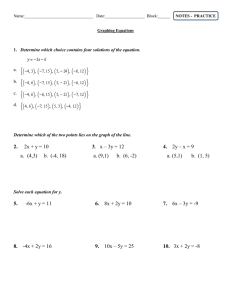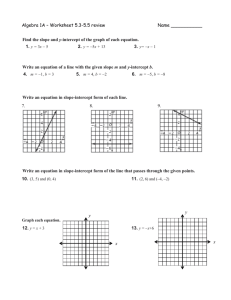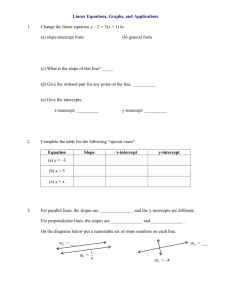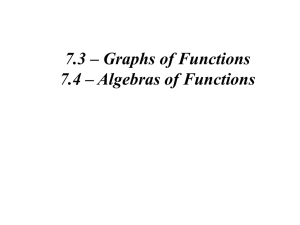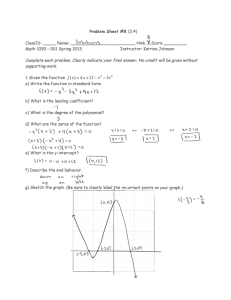Final Review: Graphs
advertisement
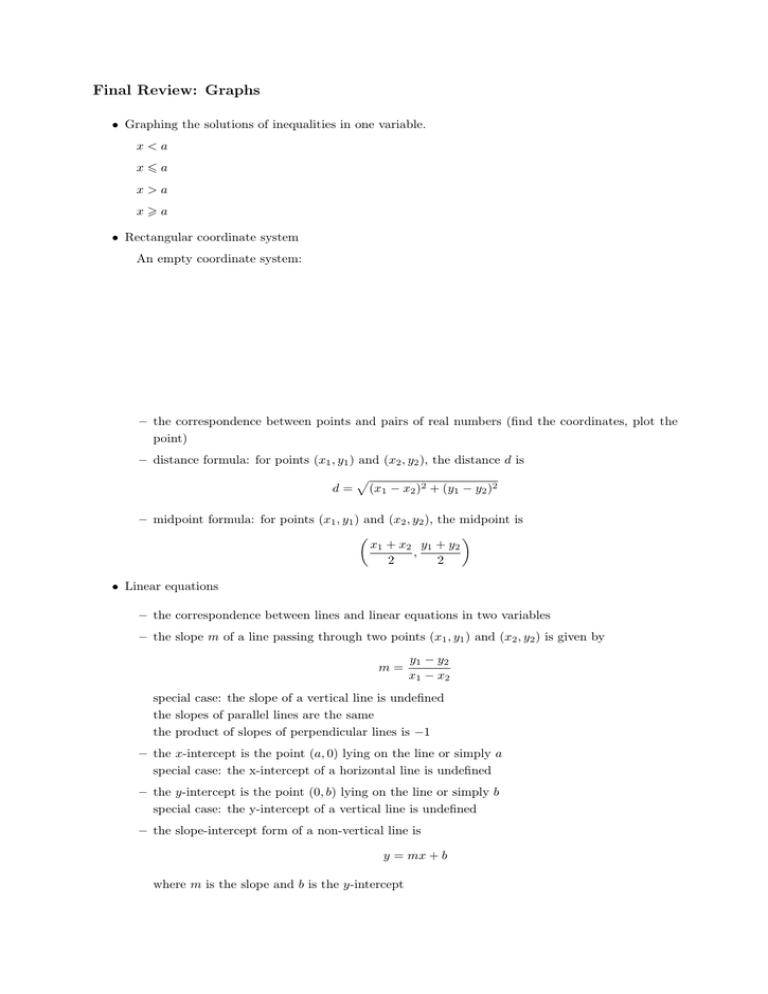
Final Review: Graphs • Graphing the solutions of inequalities in one variable. x<a x6a x>a x>a • Rectangular coordinate system An empty coordinate system: – the correspondence between points and pairs of real numbers (find the coordinates, plot the point) – distance formula: for points (x1 , y1 ) and (x2 , y2 ), the distance d is d= p (x1 − x2 )2 + (y1 − y2 )2 – midpoint formula: for points (x1 , y1 ) and (x2 , y2 ), the midpoint is ¶ µ x1 + x2 y1 + y2 , 2 2 • Linear equations – the correspondence between lines and linear equations in two variables – the slope m of a line passing through two points (x1 , y1 ) and (x2 , y2 ) is given by m= y1 − y2 x1 − x2 special case: the slope of a vertical line is undefined the slopes of parallel lines are the same the product of slopes of perpendicular lines is −1 – the x-intercept is the point (a, 0) lying on the line or simply a special case: the x-intercept of a horizontal line is undefined – the y-intercept is the point (0, b) lying on the line or simply b special case: the y-intercept of a vertical line is undefined – the slope-intercept form of a non-vertical line is y = mx + b where m is the slope and b is the y-intercept – the point-slope form of a non-vertical line is y − y1 = m(x − x1 ) where m is the slope and (x1 , y1 ) is a point on the line – the equation of a vertical line is x = a, where a is the x-intercept General steps to find the equation of a line: 1. Find the slope m (maybe it’s given in the problem). If the denominator is 0, the line is a vertical line. 2. Pick a point given in the problem and use the point-slope form. 3. Simplify to the slope-intercept form if it’s required. General steps to graph a line from a linear equation: 1. Find two points that satisfy this equation (usually x-intercept and y-intercept). 2. Plot these two points on the coordinate system. 3. Connect them by a line. • Functions – the graph of a function satisfies the vertical line test: any vertical line will intersect the graph at at most one point – the graph of a one-to-one function satisfies the horizontal line test: any horizontal line will intersect the graph at at most one point – transformations of f (x) shift c shift c shift c shift c reflect reflect reflect units to the right: units to the left: units upwards: units downwards: on x-axis: on y-axis: on the line y = x: f (x − c) f (x + c) f (x) + c f (x) − c −f (x) f (−x) f −1 (x) • Quadratic functions – the correspondence between parabolas and quadratic functions a(x − h)2 + k – open upwards if a > 0, downwards if a < 0 – vertex (h, k): lowest point if a > 0, highest point if a < 0 – axis x = h: the parabola is symmetry around this axis – x-intercepts are the solutions of a(x − h)2 + k = 0 • Exponential functions and logarithmic functions The asymptote is x-axis.

